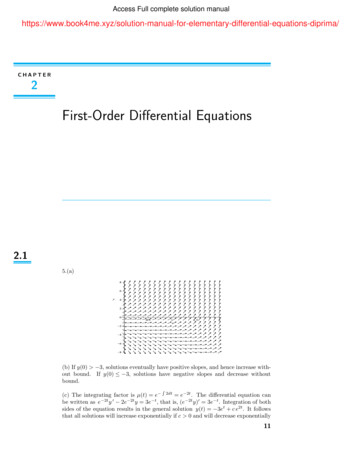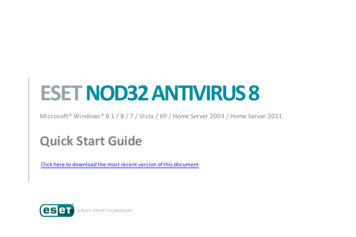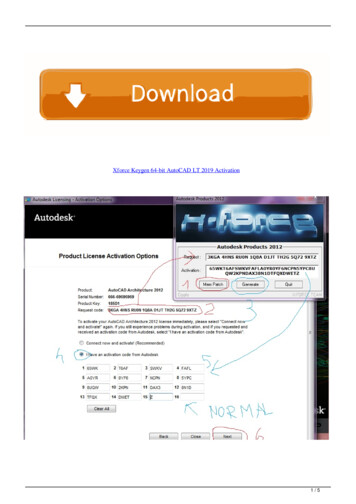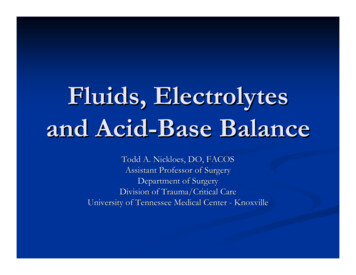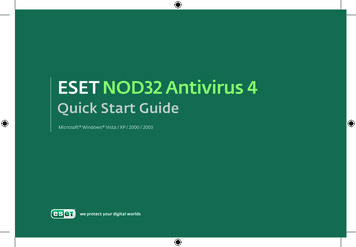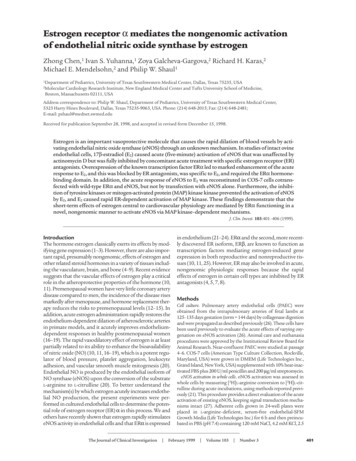
Transcription
antioxidantsArticleDifferential Activation of Glioprotective IntracellularSignaling Pathways in Primary Optic Nerve HeadAstrocytes after Treatment with Different Classesof AntioxidantsAnita K. Ghosh 1,2 , Vidhya R. Rao 2,3 , Victoria J. Wisniewski 4 , Alexandra D. Zigrossi 3 ,Jamie Floss 4 , Peter Koulen 5 , Evan B Stubbs Jr. 2,3 and Simon Kaja 2,3,4, *12345*Graduate Program in Biochemistry and Molecular Biology, Loyola University Chicago, Health SciencesCampus, Maywood, IL 60153, USA; aghosh3@luc.eduResearch Service, Edward Hines Jr. Veterans Administration Hospital, Hines, IL 60141, USA;vrao2@luc.edu (V.R.R.); evan.stubbs@va.gov (E.B.S.J.)Department of Ophthalmology, Loyola University Chicago, Stritch School of Medicine, Maywood, IL 60153,USA; ahegel@luc.eduDepartment of Molecular Pharmacology and Neuroscience, Loyola University Chicago, Stritch School ofMedicine, Maywood, IL 60153, USA; vicki1102127@gmail.com (V.J.W.); jfloss61@gmail.com (J.F.)Department of Ophthalmology and Biomedical Sciences, Vision Research Center, University ofMissouri—Kansas City, School of Medicine, Vision Research Center, Kansas City, MO 64108, USA;koulenp@umkc.eduCorrespondence: skaja@luc.edu; Tel.: 1-708-216-9223Received: 22 March 2020; Accepted: 14 April 2020; Published: 16 April 2020 Abstract: Optic nerve head astrocytes are the specialized glia cells that provide structural andtrophic support to the optic nerve head. In response to cellular injury, optic nerve head astrocytesundergo reactive astrocytosis, the process of cellular activation associated with cytoskeletalremodeling, increases in the rate of proliferation and motility, and the generation of ReactiveOxygen Species. Antioxidant intervention has previously been proposed as a therapeutic approachfor glaucomatous optic neuropathy, however, little is known regarding the response of optic nervehead astrocytes to antioxidants under physiological versus pathological conditions. The goal ofthis study was to determine the effects of three different antioxidants, manganese (III) tetrakis(1-methyl-4-pyridyl) porphyrin (Mn-TM-2-PyP), resveratrol and xanthohumol in primary opticnerve head astrocytes. Effects on the expression of the master regulator nuclear factor erythroid2-related factor 2 (Nrf2), the antioxidant enzyme, manganese-dependent superoxide dismutase2 (SOD2), and the pro-oxidant enzyme, nicotinamide adenine dinucleotide phosphate oxidase 4(NOX4), were determined by quantitative immunoblotting. Furthermore, efficacy in preventingchemically and reactive astrocytosis-induced increases in cellular oxidative stress was quantifiedusing cell viability assays. The results were compared to the effects of the prototypic antioxidant,Trolox. Antioxidants elicited highly differential changes in the expression levels of Nrf2, SOD2,and NOX4. Notably, Mn-TM-2-PyP increased SOD2 expression eight-fold, while resveratrol increasedNrf2 expression three-fold. In contrast, xanthohumol exerted no statistically significant changes inexpression levels. um bromide (MTT) uptake andlactate dehydrogenase (LDH) release assays were performed to assess cell viability after chemically andreactive astrocytosis-induced oxidative stress. Mn-TM-2-PyP exerted the most potent glioprotection byfully preventing the loss of cell viability, whereas resveratrol and xanthohumol partially restored cellviability. Our data provide the first evidence for a well-developed antioxidant defense system in opticnerve head astrocytes, which can be pharmacologically targeted by different classes of antioxidants.Antioxidants 2020, 9, 324; oxidants
Antioxidants 2020, 9, 3242 of 16Keywords: glioprotection; xanthohumol; resveratrol; manganese porphyrin; optic nerve headastrocytes; phase II antioxidant enzymes; cell viability1. IntroductionOptic nerve head astrocytes are the specialized glia cells that provide structural and trophicsupport to the unmyelinated optic nerve head. The optic nerve head is the point of exit where axons ofretinal ganglion cells leave the eye to form the axons of the optic nerve. Over the past few decades,complex signaling pathways have been identified in astrocytes that were previously thought to berestricted to neurons, including complex calcium signaling pathways [1]. Knowledge of the specificintracellular signaling pathways in optic nerve head astrocytes, however, remains limited and, due tothe unique biomechanical environment of the optic nerve head, the translatability of findings fromother types of astrocytes is limited.In response to cellular triggers that can include biomechanical, bioenergetic and biochemicalchanges, optic nerve head astrocytes undergo reactive astrocytosis (also commonly referred to asastrogliosis) [2–4]. This cellular activation is associated with cytoskeletal remodeling, increases in therate of proliferation and motility, and generation of Reactive Oxygen Species.Previous studies by us and others have shown that primary optic nerve head astrocytes arevulnerable to the deleterious effects of oxidative stress and that antioxidants can protect againstchemically induced oxidative stress [5–8]. Investigations into the underlying mechanisms, however,have primarily focused on the expression of apoptosis-related genes and proteins, such as caspases,Bcl-2, Bcl-2-associated protein and related signaling pathways [9,10].The Kelch-like ECH-associated protein 1/nuclear factor erythroid 2 related factor 2/antioxidantresponse element (Keap1/Nrf2/ARE) pathway is the master regulator of phase II antioxidantenzymes, a group of enzymes critical for the endogenous antioxidant response (for review, see [11]).Pharmaceutical modulation of this pathway is of significant interest for the treatment of neurological,neurodegenerative and neuroimmunological disorders.Therefore, the goal of the present study was to determine whether different classes of antioxidantscan elicit selective responses in the endogenous antioxidant system and whether they exertglioprotective effects in optic nerve head astrocytes against both chemically induced and reactiveastrocytosis-associated increases in oxidative stress.For this study, three different antioxidants were evaluated:manganese (III)tetrakis (1-methyl-4-pyridyl) porphyrin (Mn-TM-2-PyP), resveratrol, and xanthohumol.The effects of these antioxidants were compared to the prototypic -carboxylic acid (Trolox).Mn-TM-2-PyP is a superoxide dismutase (SOD) mimetic that belongs to the metalloporphyringroup and possesses broad antioxidant specificity, which includes scavenging O2 ·– , H2 O2 , ONOO- ,NO·, and lipid peroxyl radicals [12]. Manganese porphyrins are well characterized and offer protectionin a variety of oxidative stress injuries such as stroke, diabetes, radiation injury, dry eye disease andischemia [13–19].Resveratrol is a stilbenoid polyphenol, well-known for its abundance in grape skin, where itis produced under injurious conditions [20]. There is controversy over the specific molecularmechanism of action of resveratrol. Data suggest several distinct pathways contributing to thetissue-specific effects of resveratrol, including its direct Reactive Oxygen Species (ROS) scavengingactivity, the modulation of the endogenous antioxidant system through Nrf2 upregulation [21,22],and control over apoptosis-related genes.Xanthohumol is a naturally occurring prenylated chalconoid abundantly present inHumulus lupulus, the hops plant. Xanthohumol exerts its antioxidant effects by stimulating the
Antioxidants 2020, 9, 3243 of 16dissociation of Keap1 from Nrf2, allowing Nrf2 to translocate into the nucleus and bind the ARE,ultimately promoting the transcription of phase II antioxidant enzymes [23].Lastly, Trolox is a water-soluble analog of vitamin E and ROS scavenger. Trolox is the mostcommonly used reference standard for the antioxidant capacity of compounds [24], partly due to itslack of modulation of intracellular antioxidant enzymes [25].2. Materials and Methods2.1. Antioxidants and AntibodiesResveratrol and xanthohumol were purchased from Cayman Chemicals (Ann Arbor, MI, USA).Trolox and Mn-TM-2-PyP were obtained from Millipore Sigma (St. Louis, MO, USA). For experiments,resveratrol and xanthohumol were dissolved in dimethyl sulfoxide (Millipore Sigma, St. Louis, MO,USA), Mn-TM-2-PyP was dissolved in 0.1 M phosphate-buffered saline pH 7.4 (PBS) and Trolox wasdissolved in ethanol.The following antibodies were used for immunoblotting experiments: chicken anti-glial fibrillaryacid protein (GFAP; ab4674; AbCam, Cambridge, MA, USA; 1:5000 dilution); rabbit anti-Nox4(ab133303; AbCam; 1:5000 dilution); mouse anti-Nrf2 (VMA00224; Biorad Laboratories, Hercules,CA; 1:1000 dilution); rabbit anti-Sod2 (A1340; ABclonal, Woburn, MA; 1:2000 dilution).Glyceraldehyde-3-phosphate dehydrogenase (GAPDH) was used as endogenous control (rabbitanti-GAPDH; sc-25778; Santa Cruz Biotechnology, Dallas, TX; 1:2000 dilution). Secondary antibodieswere horseradish peroxidase-conjugated and obtained from GE Healthcare (Chicago, IL, USA).Immunocytochemistry was performed using chicken anti-glial fibrillary acid protein (GFAP;ab4674; AbCam; 1:1000 dilution) and Alexa Fluor 594-labeled goat anti-chicken secondary antibody(Thermo Fisher Scientific, Waltham, MA, USA).2.2. Primary Culture of Optic Nerve Head AstrocytesPrimary cultures of adult rat optic nerve head astrocytes were maintained and validated as wehave previously described in detail [5,6,26]. Cultures of passages 10 to 20 were used for experiments.2.3. Induction of Reactive AstrocytosisOptic nerve head astrocyte cultures were seeded at a density of 25,000 cells/cm2 in 6-well plates(TPP; Midwest Scientific, Valley Park, MO, USA). Cultures were exposed to 25-35 mm Hg pressureabove ambient pressure for 16 h in a custom-built, vacuum-sealed hyperbaric pressure chamber placedinside of a 37 C tissue culture incubator. Pressure was monitored through a liquid-immersed pressuresensor (Harvard Apparatus, Holliston, MA, USA), connected to a laptop computer running PowerLab8/35 high-performance data acquisition system supplied with LabChart Pro software and modules(ADInstruments, Colorado Springs, CO, USA). Cultures were returned to ambient pressure for 1 hprior to experiments.2.4. Protein Extraction and ImmunoblottingMedia was aspirated and cells were washed and scraped in ice-cold PBS. Samples were centrifugedat 800 g for 5 min; supernatant was aspirated, and pellets were lysed in five volumes of Cytobusterlysis reagent (Millipore Sigma St. Louis, MO, USA) supplemented with a protease inhibitor cocktail(Thermo Fisher Scientific, Waltham, MA, USA). Lysates were triturated with a 31-gauge insulin syringeand subsequently centrifuged at 16,000 g for 10 min to remove cell debris. The protein concentrationsof lysates were determined using the method of Lowry [27].For immunoblotting, protein samples with loading buffer were denatured at 85 C for 5 min.A total of 5–10 µg of each protein sample was loaded on pre-cast 4–12% NuPage Bis/Tris gels(Thermo Fisher Scientific, Waltham, MA, USA) and electrophoresed at 150 V for 75 min. Proteinswere transferred from gels to nitrocellulose membrane with 0.2 µM pore size (Amersham Protran,
Antioxidants 2020, 9, 3244 of 16GE Healthcare, Chicago, IL, USA) by wet-transfer using PierceTM Methanol-free Western Blot TransferBuffer (Thermo Fisher Scientific, Waltham, MA, USA) at 100 V for 90 min. Membranes were blockedin 5% non-fat milk in PBS supplemented with 0.2% Tween-20 (PBS-T; Millipore Sigma, St. Louis,MO, USA), then incubated with primary antibody in 2.5% milk in PBS-T at 4 C overnight whilegently shaking. All primary antibodies used are listed in Section 2.1 with catalog numbers anddilutions; GAPDH was used as an endogenous control for all experiments. Membranes were washedthree times in PBS-T then subsequently incubated with horseradish peroxidase-linked secondaryantibody in 2.5% milk in PBS-T at room temperature for 1 h. Immunoblot detection was performedby chemiluminescence using the Luminata Forte reagent (Millipore Sigma, St. Louis, MO, USA).Images were acquired using a ChemiDocTM XRS System (Bio-Rad Laboratories, Hercules, CA, USA).Protein bands were analyzed by densitometry using either Image Lab software (Bio-Rad Laboratories,Hercules, CA, USA) or Fiji software (ImageJ, NIH, Bethesda, MD, USA), and normalized to GAPDHand the control condition.2.5. ImmunocytochemistryOptic nerve head astrocytes were seeded on either black/clear bottom 96-well plates or 8-wellchamber slides at a density of 25,000 cells/cm2 . After two days, cells were rinsed in 100 µLPBS and subsequently fixed in 4% paraformaldehyde (PFA) in PBS for 15 min. Cultures wereimmunostained as described by us previously [26]. Cells were co-labeled with DAPI (NucBlueTMFixed Cell ReadyProbesTM Reagent, Thermo Fisher Scientific, Waltham, MA, USA) to label cell nuclei.Images were acquired using a plate reader (Cytation5, Biotek, Winooski, VT, USA) or Leica SP5 confocalmicroscope (Leica Microsystems Inc., Buffalo Grove, IL, USA). Immunocytochemistry was analyzed bymicrofluorimetry using Fiji software, as described by our laboratory previously [28].2.6. Filamentous and Globular Actin StainingTo label astrocyte cultures for filamentous (F-) and globular (G-) actin, cells were seededon black/clear bottom 96-well plates or 8-well chamber slides at a density of 25,000 cells/cm2 .After treatments, cells were rinsed in PBS then fixed in 4% PFA for 15 min. Cells were subsequentlywashed 3 in PBS for 5 min each, then permeabilized in 0.1% Triton-X 100 for 5 min. Stain solution wasprepared by adding two drops of ActinGreenTM ReadyProbesTM Reagent (Thermo Fisher Scientific,Waltham, MA, USA) for filamentous (F-) actin and two drops of NucBlueTM Fixed Cell ReadyProbesTMReagent (Thermo Fisher Scientific, Waltham, MA, USA) to stain nuclei, per 1 mL of PBS. Alexa FluorTM594 conjugated DNAseI (Thermo Fisher Scientific, Waltham, MA, USA) to stain globular (G-) actin wasadded to the stain solution for a final concentration of 0.3 µM, per the manufacturer’s instructions.A total of 100 µl stain solution was added to each well and incubated for 30 min at room temperaturein the dark. Cells were again washed 3 in PBS. Images were acquired using a plate reader (Cytation5,Biotek, Winooski, VT, USA).F-actin fiber length was quantified using Matlab (Mathworks, Natick, MA, USA), with exclusioncriteria set to fibers of 15 µm and 250 µm length, based on mathematical outlier considerations.The average fiber length for each condition was determined by averaging data from 10 images perwell and 8 - 16 wells per treatment condition. The intensity of G-actin immunolabel was quantified inMatlab (Mathworks) by thresholding the image and determining mean intensity per area. The averageG-actin expression for each condition was determined by averaging intensity data from 10 images perwell and 8–16 wells per treatment condition.2.7. Quantification of Oxidative Stress Using CellROX GreenOptic nerve head astrocytes were seeded in 8-well chamber slides at a density of 25,000 cells/cm2 .After the desired treatment, CellROX Green was added to the wells at a final concentration of 5 µMin complete medium and incubated with the cells for 30 min at 37 C. Media with CellROX reagentwas removed from the wells by aspiration and cells were rinsed 3 in PBS. Cells were fixed in 4%
Antioxidants 2020, 9, 3245 of 16PFA for 15 min, then rinsed again 3 in PBS. Cells were subsequently permeabilized in 0.1% TritonX-100 for 5 min. Nuclei were stained with NucBlueTM Fixed Cell ReadyProbesTM Reagent (ThermoFisher Scientific, Waltham, MA, USA) at 2 drops per ml of PBS. Cells were rinsed 3 in PBS. Chamberslides were mounted by placing a coverslip onto the slide using Aqua-Poly/Mount (PolysciencesInc., Warrington, PA, USA). Images were acquired using a Leica SPE confocal microscope (LeicaMicrosystems Inc., Buffalo Grove, IL, USA).CellROX Green fluorescent area was quantified using Fiji software. Briefly, images wereconverted to 8-bit grayscale and thresholded. The thresholded image was converted into a binaryimage and an image mask outlining the nuclei created. Analogously, the channel with CellROX fluorescence was thresholded and the nuclei mask was overlaid. The percent area of nuclear fluorescencewas quantified by dividing the area of fluorescence by the total nuclear area. Data are from 10 imagesper well, and 3–4 separate wells were analyzed per experiment.2.8. Quantification of Oxidative Stress Using DichlorofluoresceinFor quantification of ROS using the dichlorofluorescein method, optic nerve head astrocyteswere seeded in 96-well plates at a density of 25,000 cells/cm2 and incubated overnight. Media wasremoved and cells were incubated with 5 µM 6-carboxy-20 , 70 -dichlorodihydrofluorescein diacetate(Carboxy-H2 DCFDA, Thermo Fisher Scientific, Waltham, MA, USA) in HBSS supplemented with10 mM HEPES at 37 C for 30 min. Subsequently, cell supernatant was removed and replaced bycomplete medium. Following a 30-min incubation, cells were exposed to the desired treatments.After treatments, dichlorofluorescein fluorescence, the product of cleavage of Carboxy-H2 DCFDA byROS, was measured at 488 nm excitation/ 520 nm emission using a plate reader (Cytation5, Biotek,Winooski, VT, USA).2.9. Cell Viability AssaysTo determine the glioprotective effects of antioxidants on reactive astrocytosis,we conducted um bromide (MTT) uptake and lactatede-hydrogenase (LDH) release assays were performed, as previously described by us in detail [5,6].In brief, supernatants (50 µL) were collected and LDH assays performed. Cells were incubated withMTT dye for 1.5 h and subsequently lysed in dimethylsulfoxide (DMSO). Data were normalized to thebaseline control condition and expressed as fold-change.2.10. Data Analysis and StatisticsAll data were analyzed, with the investigator blinded to treatment group. For immunoblotting,all samples were assigned a random number and samples were loaded in random order on acrylamidegels to minimize technical and investigator bias. Data are presented as mean standard error ofmean (SEM). Open and filled circles represent individual data points. Data were analyzed usingpaired or unpaired Student’s t-test, one-way analysis of variance (ANOVA) or Kruskal–Wallis ANOVA,or Two-Way ANOVA. Differences between groups were subsequently determined using either Tukey’s,Dunn’s, or Sidak’s multiple comparison test, as appropriate. Differences were considered statisticallysignificant at the p 0.05 level.3. Results3.1. Reactive Astrocytosis Causes Cytoskeletal Remodeling and Generation of Increased Cellular Levels ofOxidative StressAstrocytes undergoing reactive astrocytosis display a myriad of distinct biochemical and functionalphenotypes, including cytoskeletal remodeling and excess generation of cellular oxidative stress.In order to induce a cellular phenotype of reactive astrocytosis, optic nerve head astrocytes wereexposed to hyperbaric pressure at 35 mm Hg above ambient pressure for a period of 16 h in
Antioxidants 2020, 9, 3246 of 16a hyperbaric pressure chamber at 37 C and 5% CO2 /95% humidity. Control cultures were maintainedat ambient pressure.Antioxidants2020,of9,reactivex FOR PEERREVIEW resulted in significantly elevated GFAP levels (Figure 1A–B,F).6 Intensityof 16Inductionastrocytosisof GFAP immunoreactivity increased 4.52-fold in reactive astrocytosis compared with control optic nerve headquantitativeforFigureGFAP,whicha 1.63-foldincreasein expressionof GFAPfor(nGFAP, astrocytes(n immunoblot21–22, p 0.01,1A).Theserevealedresults wereconfirmedby quantitativeimmunoblot3, p revealed0.05, Figure1B). increase in expression of GFAP (n 3, p 0.05, Figure 1B).whicha 1.63-foldF-actin / G-actin 1051000001542PhalloidinDNAse IDAPIMergePhalloidinDNAse TRL.A.RCTRLGFAP0.50.00F1.0DG actin (RFU)51.5***55R.A.10CCTRL15*2.0F-actin (fiber length; μm)**20GFAP protein expressionB25GFAP ImmunoreactivityARAFigure1. Reactive astrocytosis results in cytoskeletal remodeling. (A) anti-glial fibrillary acid proteinFigure 1. Reactive astrocytosis results in cytoskeletal remodeling. (A) anti-glial fibrillary acid protein(GFAP)was statisticallysignificantincreasein GFAP(GFAP)immunoreactivityimmunoreactivity wasstatisticallysignificantincreasein escomparedtocontrol(n 20–21;p0.01).immunoreactivity was observed in activated astrocytes compared to control (n 20–21; p 0.01). ve immunoblot analysis revealed a statistically significant increase in GFAP proteinexpressionactivatedastrocytesastrocytesp 0.05).(C) Quantificationof individualF-actinexpression inin activated(n (n 3; p 3;0.05).(C) Quantificationof individualF-actin ificant36% led a statistically significant 36% 2% decrease in activated optic nerve head astrocytes (n 10;(np 10;p 0.001).(D) A statisticallysignificant87% increase 12% increasein G-actinimmunofluorescence0.001).(D) A statisticallysignificant87% 12%in G-actinimmunofluorescencewaswasobservedin activatedastrocytes10; p(E) The0.001).(E)toTheF-actinG-actinratio showedobservedin activatedastrocytes(n 10; p(n 0.001).F-actinG-actinratiotoshoweda statisticallya e astrocytesin activated(n 10, 0.001). (F) Representativeimagesin activated(n astrocytes 10, p 0.001).(F)p Representativeimages of GFAPofimmunocytochemistry.GFAP immunocytochemistry.(G) Representativeof actinstaining.OligomericF-actin(G) Representativeimages imagesof TMTMTM ere visualizedvisualized using ndAlexaFluor594conjugatedconjugated DNAseI,DNAseI, respectively.wereanalyzedby Student’st-test;* p 0.05,p y Student’st-test;* p **0.05,** p p p 0.001.Scalebar:bar:(F) 25(G) 10CTRLCTRL control;R.A. R.A.reactiveastrocytosis.*** 0.001.Scale(F)μm,25 µm,(G)μm.10 µm. control; reactiveastrocytosis.Todeterminedetermineeffectof reactiveastrocytosisonactinthe cytoskeleton,actin cytoskeleton,optic headnerveastrocytesheadTothetheeffectof reactiveastrocytosison theoptic nerveastrocyteswith fluorescently-conjugatedphalloidinto detectI edphalloidin todetect F-actinandF-actinDNAseandI toDNAsedetect ol astrocytes exhibited long, parallel bundles of actin filaments with modest G-actin astrocytes,incontrast,showedsignificantactivated optic nerve head astrocytes, in contrast, showed significant disorganization of F-actindisorganizationF-actinfilaments(Figure 1G).The quantificationof Thequantificationof F-actinindividual fiberlengthrevealeda 36% 2%revealeda36% astrocytes(41.2 0.9μm;shortening of actin fibers in activated optic nerve head astrocytes (41.2 0.9 µm; n 10) comparedn 10) compared with control (26.3 0.8 μm, n 10; p 0.001; Figure 1C). This actin fiber shorteningwithcontrol (26.3 0.8 µm, n 10; p 0.001; Figure 1C). This actin fiber shortening was associatedwas associated with a concomitant 87% 12% increase in the expression levels of monomeric G-actin,with a concomitant 87% 12% increase in the expression levels of monomeric G-actin, as determinedas determined by fluorimetry (n 10, p 0.001; Figure 1D, G). In order to test the dependence of theby fluorimetry (n 10, p 0.001; Figure 1D, G). In order to test the dependence of the two parameters,two parameters, the ratio of F-actin fiber length to G-actin expression was calculated, revealing a 68.2%the ratio of F-actin fiber length to G-actin expression was calculated, revealing a 68.2% 3.6% reduction 3.6% reduction associated with reactive astrocytosis (n 10, p 0.001; Figure 1E).associated with reactive astrocytosis (n 10, p 0.001; Figure 1E). Cellular levels of oxidative stress were detected using CellROX Green. Reactive astrocytosisCellularlevels of oxidativestresswere detectedusingindicativeCellROXof Green.resultedin significantnuclear andcytosolicfluorescence,elevatedReactivecellular astrocytosislevels ence,indicativeofelevatedcellularlevelsoxidative stress that could be prevented by pre-treatment with the prototypic antioxidant,Troloxof(Figureoxidativestress thatcouldbe preventedby pre-treatmentwiththe prototypic Green2A). CellROXstainingwas quantifiedby estimating thepercentageof the totalantioxidant,nuclear Green imatingthepercentageof the total area covered by fluorescent CellROX signal (Figure 2B). Reactive astrocytosis increased nuclear signal (Figure 2B). Reactive astrocytosis orescence 4.6 0.6-fold (from 10.4% in control to 47.9% in activated astrocytes; n 7; ANOVA p nuclearfluorescence4.6comparisons 0.6-fold test,(fromcontrolto 47.9% within activatedastrocytes;n 7;0.001; Tukey’smultiplep 10.4%0.001),inwhilepre-treatmentTrolox reducedthe areaof nuclear fluorescence to 28.6 0.1% of baseline (n 7, p 0.001; Figure 2B).Results from the semi-quantitative CellROX assay were confirmed by the plate reader-basedquantification of dichlorofluorescein labeling. Reactive astrocytosis increased dichlorofluorescein
Antioxidants 2020, 9, x FOR PEER REVIEW7 of 16fluorescence intensity by 83% 14% (n 16, p 0.001; Figure 2C) compared to control. The exposureAntioxidants2020,to9, 324of culturesa sublethal (100 μM) concentration of tBHP resulted in a 53% 35% increase 7inof 16fluorescence compared with control untreated optic nerve head astrocytes (n 16, p 0.001; Figure2C). Reactive astrocytosis further increased fluorescence to 122% 10% of control untreated cells (nANOVA p 0.001; Tukey’s multiple comparisons test, p 0.001), while pre-treatment with Trolox 3, p 0.001; Figure 2C). Trolox prevented both tBHP- and reactive-astrocytosis-induced increasesreducedthe area of nuclearfluorescenceto 28.6 0.1%in dichlorofluoresceinfluorescence(p 0.05;Figure2C).of baseline (n 7, p 0.001; Figure 2B).AR.A.BR.A. 100 µM Trolox***80% nuclear areaCTRL***604020D300CTRL ****** RTr .A.olox.A.REP 0.430.4Absorbance (A570)0.20.20.1.A.RCTRL0.0.A.0.0RoxTrolµMµM00 0Absorbance (A490)***UP 0.240.8R.A.200atedNormalized fluorescence (%)C 100µMCTRL0Figure 2. Reactive astrocytosis results in elevated cellular levels of oxidative stress. (A) Representative images2. Reactiveastrocytosisresultsin elevatedcellularnuclearlevels ofoxidative(A) Representativeof FigureCellROXGreen stainingfor encewere observed Green staining for ROS generation. Increased nuclear and cytosolic fluorescenceofopticCellROXin imagesactivatednervehead astrocytes compared to control. Pretreatment with 100 µM Trolox for 1 h prior toobservedin activatedoptic preventednerve hewereinductionof reactiveastrocytosisthisincrease inoxidativetostress.Whitearrows pointto nuclearμM Troloxindicativefor 1 h priorto theinduction(B)of ROSreactiveastrocytosisprevented asthisincrease influorescenceof ROSgeneration.generationwas quantifiedpercentageof oxidativenuclear area Greenstress.byWhitearrowspointfluorescenceto nuclear fluorescenceindicativeof ROS(B) ROSgenerationtest,coveredCellROX(n 7; One-WayANOVAwithgeneration.Tukey’s multiplecomparisons Green fluorescence (n 7; CellROXp 0.001). Trolox prevented this increase (n 7; P 0.001). (C) Dichlorofluorescein fluorescence increasedWay ANOVAwithTukey’smultiple comparisonstest, p Pretreatment 0.001). Troloxpreventedthis(100increase(n ofsignificantlyduringreactiveastrocytosis(n 16, p 0.001).witha sublethalµM) dose7;P significantlyduringreactiveastrocytosistBHP for 1 h prior to and during induction of reactive astrocytosis further increased cellular levels of oxidative(n 16, p 0.001). Pretreatment with a sublethal (100 μM) dose of tBHP for 1 h prior to and duringstress (n 16, p 0.001). Trolox prevented both the tBHP- and reactive-astrocytosis-induced upregulationinduction of reactive astrocytosis further increased cellular levels of oxidative stress (n 16, p 0.001).of oxidative stress (p 0.05). Sixteen individual replicate datapoints are shown, representative of threeTrolox prevented both the tBHP- and reactive-astrocytosis-induced upregulation of oxidative stressseparate experiments. Data were analyzed by Two-Way ANOVA (p 0.001) with results from Sidak’s multiple(p 0.05). Sixteen individual replicate datapoints are shown, representative of three separatecomparisons test indicated by asterisks. (D) Induction of reactive astrocytosis did not result in a loss of cellexperiments. Data were analyzed by Two-Way ANOVA (p 0.001) with results from Sidak’s multipleviability, as determined by comparing absolute LDH release by measuring A49
astrocytes; phase II antioxidant enzymes; cell viability 1. Introduction Optic nerve head astrocytes are the specialized glia cells that provide structural and trophic support to the unmyelinated optic nerve head. The optic nerve head is the point of exit where axons of retinal ganglion cells leave the eye to form the axons of the optic nerve.

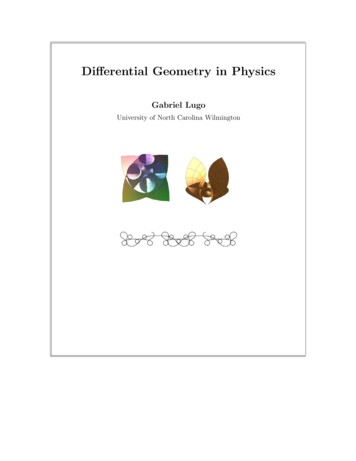

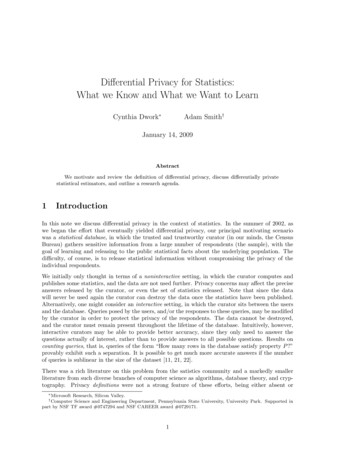
![Introduction to SEIR Models - Indico [Home]](/img/37/0.jpg)
